
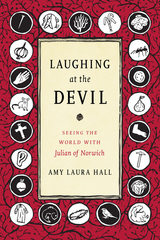
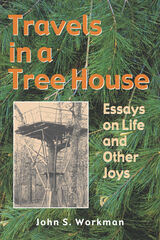

“Be always converting, and be always converted; turn us again, O Lord,” Thomas Shepard urged his Cambridge congregation in the 1640s. This mandate coming down from American Puritan times to New Age seekers, to be “always converting, and always converted,” places a radical burden on the self as site of renewal and world-change, even as conversion becomes surrounded by deconversion (rejection of prior beliefs) and counterconversion (turns to alternative beliefs) across global modernity.
Rob Wilson’s reconceptualization of the American project of conversion begins with the story of Henry ‘Ōpūkaha‘ia, the first Hawaiian convert to Christianity, “torn from the stomach” of his Native Pacific homeland and transplanted to New England. Wilson argues that ‘Ōpūkaha‘ia’s conversion is both remarkable and prototypically American, because he dared to redefine himself via this drive to rebirth.
By mapping the poetics and politics of conversion and counterconversion, Wilson returns conversion to its central place in the American literature, history, and psyche. Through ‘Ōpūkaha‘ia’s story, and through the works of the Tongan social scientist and fiction writer Epeli Hau‘ofa, Wild West poet Ai, and the mercurial Bob Dylan, Wilson demonstrates that conversion—seemingly an anachronistic concern in this secular age—is instead a global, yet deeply American subject, less about “salvation” or finality than about “experimentation” and the quest for modern beatitude.
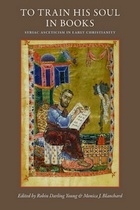
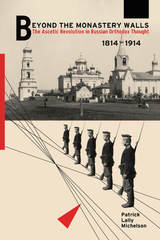
Patrick Lally Michelson's intellectual history of asceticism in Russian Orthodox thought traces the development of these competing arguments from the early nineteenth century to the early months of World War I. He demonstrates that this discourse was an imaginative interpretation of lived Orthodoxy, primarily meant to satisfy the ideological needs of Russian thinkers and Orthodox intellectuals as they responded to the socioeconomic, political, and cultural challenges of modernity.
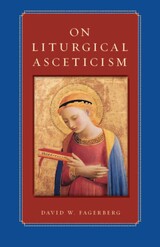
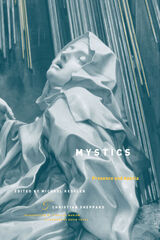
Mystics presents a collection of previously unpublished essays by prominent scholars that consider both the idea of mystics and mysticism. The contributors offer detailed discussions of a variety of mystics from history, including Dionysius the Areopagite, Thomas Aquinas, Joan of Arc, Nicholas of Cusa, Saint Teresa of Avila, Martin Luther, and George Herbert. Essays on mysticism in George Bataille, Maurice Blanchot, and contemporary technology bring the volume into the twenty-first century.
For anyone interested in the state of current thinking about mysticism, this collection will be an essential touchstone.
Contributors:
Thomas A. Carlson, Alexander Golitzin, Kevin Hart, Amy Hollywood, Michael Kessler, Jean-Luc Marion, Bernard McGinn, Françoise Meltzer, Susan Schreiner, Regina M. Schwartz, Christian Sheppard, David Tracy
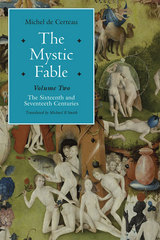
Though the second volume remained in fragments at the time of his death, Michel de Certeau had the foresight to leave his literary executor detailed instructions for its completion, which formed the basis for the present work. Together, both volumes solidify Certeau’s place as a touchstone of twentieth-century literature and philosophy, and continue his exploration of the paradoxes of historiography; the construction of social reality through practice, testimony, and belief; the theorization of speech in angelology and glossolalia; and the interplay of prose and poetry in discourses of the ineffable. This book will be of vital interest to scholars in religious studies, theology, philosophy, history, and literature.
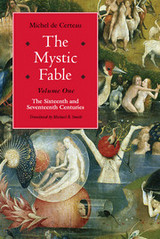
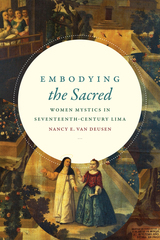
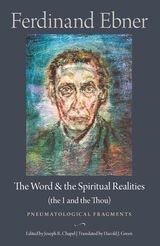
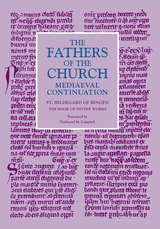
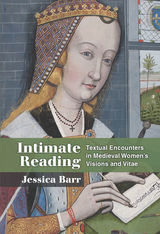
This new volume is structured around five case studies. Chapters consider the biographies of 13th-century holy women from Liège, the writings of Margery Kempe, Gertrude of Helfta, Mechthild of Magdeburg, Marguerite Porete, and Julian of Norwich. At the heart of Intimate Reading is the question of how reading works—what it means to enter imaginatively and intellectually into the words of another. The volume showcases the complexity of medieval understandings of the work of reading, deepening our perception of the written word’s capacity to signify something that lies even beyond rational comprehension.

What is particular to these thinkers, Hollywood reveals, is their attention to forms of mysticism associated with women. They regard mystics such as Angela of Foligno, Hadewijch, and Teresa of Avila not as emotionally excessive or escapist, but as unique in their ability to think outside of the restrictive oppositions that continue to afflict our understanding of subjectivity, the body, and sexual difference. Mystics such as these, like their twentieth-century descendants, bridge the gaps between action and contemplation, emotion and reason, and body and soul, offering new ways of thinking about language and the limits of representation.
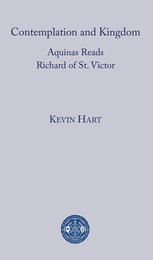
This book is vintage Hart, erudite, well written, a treat for a wide readership. It is an example of how theology ought to be done, with a clarity and depth unsurpassed in today’s scholarly world. Its blend of anglo-saxon elegance and continental insights will be praised in the Academy and outside. – Jean-Yves Lacoste, Clare Hall, Cambridge
In the light of great contemporary interest in contemplation, this brilliant and erudite work is a stunning example. The focus on Richard of St. Victor and Thomas Aquinas is especially appropriate. Theologians and philosophers will be especially thankful for Kevin Hart’s work on the actuality of contemplation. – David Tracy, University of Chicago
Kevin Hart holds the Edwin B. Kyle Chair of Christian Theology at the University of Virginia where he is also Courtesy Professor of English and Courtesy Professor of French. In 2020 he was awarded the Aquinas Medal by the Department of Philosophy at the University of Dallas. His 2020 Étienne Gilson Lectures, given at L'Institut Catholique de Paris, offer a fresh approach to the theology of the imago dei in Augustine. His 2020 Gifford Lectures, given at Glasgow University, examine various questions to do with the theology of contemplation and propose a new "hermeneutics of contemplation." His most recent scholarly publications include Kingdoms of God and Poetry and Revelation, and his most recent collections of poetry are Wild Track: New and Selected Poems and Barefoot.
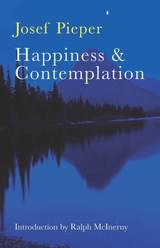
“The ultimate of human happiness is to be found in contemplation.” In offering this proposition of Thomas Aquinas to our thought, Josef Pieper uses traditional wisdom in order to throw light on present-day reality and present-day psychological problems. What, in fact, does one pursue in pursuing happiness? What, in the consensus of the wisdom of the early Greeks, of Plato and Aristotle, of the New Testament, of Augustine and Aquinas, is that condition of perfect bliss toward which all life and effort tend by nature? In this profound and illuminating inquiry, Pieper considers the nature of contemplation, and the meaning and goal of life.
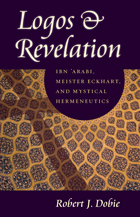
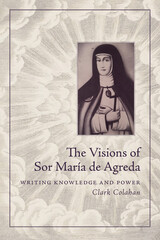
Clark Colahan now offers the first major study of Sor María's writings, including translations of two previously unpublished works: Face of the Earth and Map of the Spheres and the first half of her Report to Father Manero, in which she reflects on her bilocation.

In time for the centennial celebration of her classic Mysticism, this volume of Underhill's letters will enable readers and researchers to follow her as she reconciled her beliefs with her daily life. The letters reveal her personal and theological development and clarify the relationships that influenced her life and work. Hardly aloof, she enjoyed the interests, mirth, and compassion of close friendships.
Drawing from collections previously unknown to scholars, The Making of a Mystic shows the range of Evelyn Underhill's mind and interests as well as the immense network of her correspondents, including Sir James Frazier and Nobel Prize laureate Rabindranath Tagore. This substantial selection of Underhill's correspondence demonstrates an exceptional scope, beginning with her earliest letters from boarding school to her mother and extending to a letter written to T. S. Eliot from what was to be her deathbed in London in 1941 as the London Blitz raged around her.
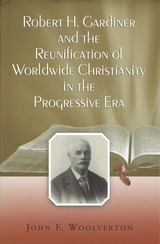
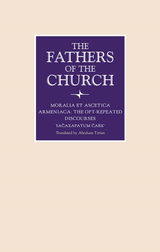
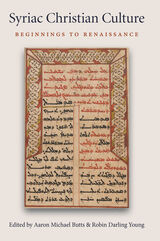
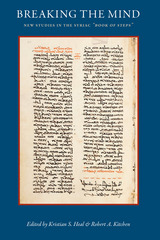
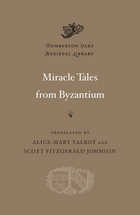
Miracles occupied a unique place in medieval and Byzantine life and thought. This volume makes available three collections of miracle tales never before translated into English. Together, the collections offer an exceptional variety of miracles from the Byzantine era.
First are the fifth-century Miracles of Saint Thekla. Legendary female companion of the Apostle Paul, Thekla counted among the most revered martyrs of the early church. Her Miracles depict activities, at once extraordinary and ordinary, in a rural healing shrine at a time when Christianity was still supplanting traditional religion. A half millennium later comes another anonymous text, the tenth-century Miracles of the Spring of the Virgin Mary. This collection describes how the marvelous waters at this shrine outside Constantinople healed emperors, courtiers, and churchmen. Complementing the first two collections are the Miracles of Saint Gregory Palamas, fourteenth-century archbishop of Thessalonike. Written by the most gifted hagiographer of his era (Philotheos Kokkinos), this account tells of miraculous healings that Palamas performed, both while alive and once dead. It allows readers to witness the development of a saint’s cult in late Byzantium. Saints and their miracles were essential components of faith in medieval and Byzantine culture. These collections deepen our understanding of attitudes toward miracles. Simultaneously, they display a remarkable range of registers in which Greek could be written during the still little-known Byzantine period.

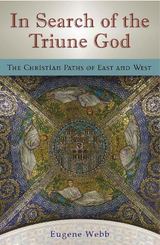
Under the broad umbrella of the Christian religion, there exists a great divide between two fundamentally different ways of thinking about key aspects of the Christian faith. Eugene Webb explores the sources of that divide, looking at how the Eastern and Western Christian worlds drifted apart due both to the different ways they interpreted their symbols and to the different roles political power played in their histories. Previous studies have focused on historical events or on the history of theological ideas. In Search of the Triune God delves deeper by exploring how the Christian East and the Christian West have conceived the relation between symbol and experience.
Webb demonstrates that whereas for Western Christianity discussion of the doctrine of the Trinity has tended toward speculation about the internal structure of the Godhead, in the Eastern tradition the symbolism of the Triune God has always been closely connected to religious experience. In their approaches to theology, Western Christianity has tended toward a speculative theology, and Eastern Christianity toward a mystical theology.
This difference of focus has led to a large range of fundamental differences in many areas not only of theology but also of religious life. Webb traces the history of the pertinent symbols (God as Father, Son of God, Spirit of God, Messiah, King, etc.) from the Hebrew Bible and New Testament through patristic thinkers and the councils that eventually defined orthodoxy. In addition, he shows how the symbols, interpreted through the different cultural lenses of the East and the West, gradually took on meanings that became the material of very different worldviews, especially as the respective histories of the Eastern and Western Christian worlds led them into different kinds of entanglement with ambition and power.
Through this incisive exploration, Webb offers a dramatic and provocative new picture of the history of Christianity.

Created in the tenth century, most likely as an imperial commission, the Menologion is a collection of rewritings of saints’ lives originally intended to be read at services for Christian feast days. Yet Symeon Metaphrastes’s stories also abound in transgression and violence, punishment and redemption, love and miracles. They resemble Greek novels of the first centuries of the Common Era, highlighting intense emotions and focusing on desire, both sacred and profane.
Symeon Metaphrastes was celebrated for rescuing martyrdom accounts and saints’ biographies that otherwise may have been lost. His Menologion, among the most important Byzantine works, represents the culmination of a well-established tradition of Greek Christian storytelling. A landmark of Byzantine religious and literary culture, the Menologion was revered for centuries—copied in hundreds of manuscripts, recited publicly, and adapted into other medieval languages. This edition presents the first English translation of six Christian novels excerpted from Symeon’s text, all of them featuring women who defy social expectations.
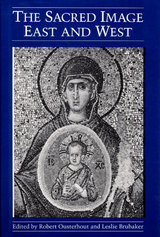



These vitae feature holy men and women who opposed imperial edicts and suffered for their defense of images, from the nun Theodosia whose efforts to save the icon of Christ Chalkites made her the first iconodule martyr, to Symeon of Lesbos, the pillar saint whose column was attacked by religious fanatics.
The second volume in this series introduces saints who were active during the period of the iconoclastic controversy in Byzantium (726–843). For almost a century and a half, theological and popular opinions were strongly divided on the question of the manufacture and veneration icons of Christ, the Virgin, and saints.
Life of St. Theodosia of Constantinople
Life of St. Stephen the Younger
Life of St. Anthousa of Mantineon
Life of St. Anthousa, Daughter of Constantine V
Life of the Patriarch Nikephoros I of Constantinople
Life of Sts. David, Symeon, and George of Lesbos
Life of St. Ioannikios
Life of St. Theodora the Empress
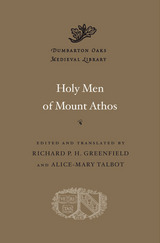
Often simply called the Holy Mountain, Mount Athos was the most famous center of Byzantine monasticism and remains the spiritual heart of the Orthodox Church today. This volume presents the Lives of Euthymios the Younger, Athanasios of Athos, Maximos the Hutburner, Niphon of Athos, and Philotheos. These five holy men lived on Mount Athos at different times from its early years as a monastic locale in the ninth century to the last decades of the Byzantine period in the early fifteenth century. All five were celebrated for asceticism, clairvoyance, and, in most cases, the ability to perform miracles; Euthymios and Athanasios were also famed as founders of monasteries.
Holy Men of Mount Athos illuminates both the history and the varieties of monastic practice on Athos, individually by hermits as well as communally in large monasteries. The Lives also demonstrate the diversity of hagiographic composition and provide important glimpses of Byzantine social and political history.
All the Lives in this volume are presented for the first time in English translation, together with authoritative editions of their Greek texts.

Saints of Ninth- and Tenth-Century Greece collects funeral orations, encomia, and narrative hagiography. Together, these works illuminate one of the most obscure periods of Greek history—when holy men played central roles as the Byzantine administration reimposed control on southern and central Greece in the wake of Avar, Slavic, and Arab attacks and the collapse of the late Roman Empire. The bishops of the region provided much-needed leadership and institutional stability, while ascetics established hermitages and faced invaders. The Lives gathered here include accounts of Peter of Argos, which offers insight into episcopal authority in medieval Greece, and Theodore of Kythera, an important source for the history of piracy in the Aegean Sea.
This volume, which illustrates the literary variety of saints’ Lives, presents Byzantine Greek texts written by locals in the provinces and translated here into English for the first time.

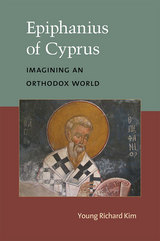

Ignatios the Deacon was a key figure in the revival of literary culture that took place at Constantinople in the first half of the ninth century. He is best known for his hagiographical works, but he also wrote poems, compiled an anthology of ancient proverbs, and edited textbooks. For some time he served as bishop of Nicaea under an Iconoclastic regime, but later repented of his errors and moved into the “orthodox” camp.
Preserved in a single manuscript, Ignatios’s correspondence has remained practically unknown to scholars. Some of the letters deal with literary trifles, while others contain valuable information on the social and economic history of the period. Taken together, they afford a unique glimpse into the activity of a Byzantine intellectual, struggling to survive in a time of bitter doctrinal strife.


Lazaros of Mt. Galesion was widely recognized as a star of contemporary Byzantine monasticism by the time he died in 1053. His reputation for sanctity rested primarily on his extraordinary perseverance as a pillar ascetic, as he spent the last forty or so years of his life atop a column on the barren mountain of Galesion.
Apart from his asceticism, Lazaros was known particularly for his remarkable insight, wise advice, and unstinting generosity, as well as his miraculous powers. Visitors flocked to see the gaunt old man who had become for them a living icon. On the bleak mountainside around him, a considerable monastic community developed, and, over time, he became known and respected by the rich and powerful of his day.
The vita of Lazaros, here translated into English for the first time, was written shortly after his death by a disciple, Gregory the Cellarer. The tale is not one of simple veneration. Its author makes clear that Lazaros’s reputation was by no means unquestioned during his lifetime, and he reveals the existence of a sometimes startling hostility toward him on the part of local church officials, neighboring monasteries, and even his own monks. Visible here is a fascinating and unusual glimpse into the dynamics of the making, or breaking, of a holy man's reputation. It is a refreshing piece of hagiography that also provides a wealth of information on Byzantine life.
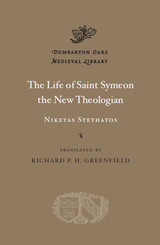
Today the Byzantine mystic, writer, and monastic leader Symeon the New Theologian (ca. 949 to 1022 ce) is considered a saint by the Orthodox Church and revered as one of its most influential spiritual thinkers. But in his own time a cloud of controversy surrounded him and the suspicion of heresy tainted his reputation long afterward.
The Life was written more than thirty years after Symeon’s death by his disciple and apologist the theologian Niketas Stethatos, who also edited all of Symeon’s spiritual writings. An unusually valuable piece of Byzantine hagiography, it not only presents compelling descriptions of Symeon’s visions, mystical inspiration, and role as a monastic founder, but also provides vivid glimpses into the often bitter and unpleasantly conflicted politics of monasticism and the construction of sanctity and orthodoxy at the zenith of the medieval Byzantine Empire. Although the many volumes of Symeon’s spiritual writings are now readily available in English, the present translation makes the Life accessible to English readers for the first time. It is based on an authoritative edition of the Greek.
READERS
Browse our collection.
PUBLISHERS
See BiblioVault's publisher services.
STUDENT SERVICES
Files for college accessibility offices.
UChicago Accessibility Resources
home | accessibility | search | about | contact us
BiblioVault ® 2001 - 2024
The University of Chicago Press









